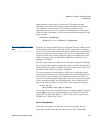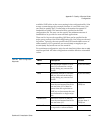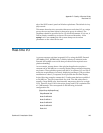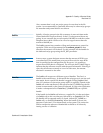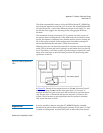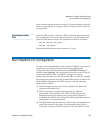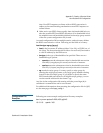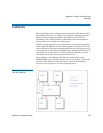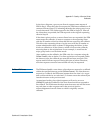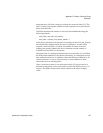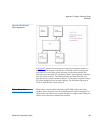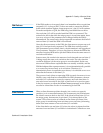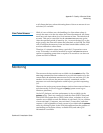
Appendix D Quality of Service Guide
Non-Realtime I/O Configuration
StorNext 3.5 Installation Guide 153
time. Non-RTIO requests on clients with an RVIO reservation is
subject to the same throttling mechanism as non-RTIO requests on
normal clients.
4 Other active non-RTIO clients equally share the bandwidth left over
after the possible RTIO and RVIO allocations. If no bandwidth is left,
the minimal reserved bandwidth (defined in the stripe group section
of the file system configuration file) is used.
A central configuration file has multiple entries, and each entry defines
the RVIO reservation for a client. Following are the fields of an entry:
host bw-type sg=yy,[sg=yy]
• host is the host name, IP address (either V4 or V6), or FQDN, etc. of
the client. The host name should be able to be resolved (converted to
a valid IP address) by the FSM server.
• bw-type is the type of bandwidth to be specified. There are two
bandwidth type options:
• qosmb means the subsequent value for bandwidth reservation
uses MB/s (megabytes per second) as the unit of measure.
• qosios means the subsequent value for bandwidth reservation
uses IOs/s (inputs/outputs per second) as the unit of measure.
• sg stands for stripe group. You may specify a stripe group by
entering the stripe group name, or by stripe group number starting
from 0 for the first stripe group. If you'd like to specify the same
RVIO bandwidth reservation for all eligible stripe groups, you can
use the asterisk wildcard in the format *=yy.
Any line in the configuration file starting with the pound sign (#) is
considered a comment line and is not executed.
For additional information about entering the configuration file for QOS,
see the man page called qos_config.1.
Configuration File
Examples 4
Following are some example configuration file entry examples:
box1.xyz.com qosios 2=200,4=50,sg5=45
10.10.1.8 qosmb *=60



